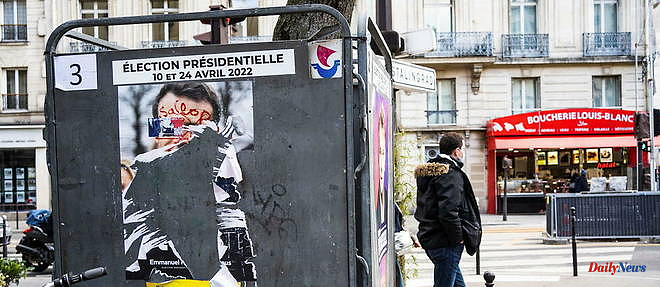What makes an image political? Why are artistic images often seen today as a danger or even an attack on morality? We discussed it with Ophir Levy, lecturer in film studies at the University of Paris 8, and Emmanuel Taïeb, professor of political science at Sciences Po Lyon. The two authors of Political Power of Images (PUF) explain why any image has an intrinsic political effect. They denounce the paternalistic and infantilizing attitude of certain institutions with regard to images.
The Point: We have recently witnessed heated controversies over the freedom of artistic creation, which can lead to censorship, especially in the world of comics. Why is the image today considered a danger, even an attack on morality?
Ophir Levy: Probably because before being perceived as the object of a creative process, product of the imagination or fantasies of its author, it is now seen as an act that arises on the social scene. It would have a performative character. However, we sometimes tend to confuse the referent and its representation, the crime and the fantasy, the image appearing here as a kind of passage to the act. Beyond the particular case of the comic strip author Bastien Vivès, who is accused of having put into images scenes that have been assimilated to child pornography, a subject all the more thorny as it touches on what has become one of the major taboos of our time, we can broaden the question: to what extent is it necessary, possible or desirable to legislate on fantasy?
Such a perspective, if one thinks of Sade, Bataille and Nabokov, or even of Buñuel or Cronenberg as far as cinema is concerned, would consist not only in folding the narrator and the characters back onto the author, but also in eliminating any deviation between imagination and reality. In this sense, we live in a rather contradictory situation: on the one hand, images are delegitimized by those who criticize their inconsistency and mindless flow; on the other, they are almost sacred as being themselves a piece of reality.
Emmanuel Taïeb: We do tend to forget the distance between representation and reality. The prohibition or fear of fantasy can pose problems concerning the power of the imagination and the personal freedom to fantasize and write. In psychoanalysis, the fantasy is not negative in itself. There is a distance between fantasy and action. Fiction feeds on fantasies and imagination par excellence, and one can find that there are films ten times more violent than the incriminated boards of Riad Sattouf.
O. L.: The question of the deleterious influence of images is almost as old as cinema. In Germany in the early 1910s, the Church meticulously tallied the number of murders, adulteries or prostitution scenes in films in order to denounce the "danger to the people" that the cinema represented. As if every image were an irrepressible invitation to imitation and that neither the creators nor the spectators had the ability to gain height. Claiming to protect adult spectators against the threat of images is, to say the least, an infantilizing attitude.
E. T.: Yes, it's a paternalistic and childish attitude, and our book is a response to this conception of the image. We do not trust the viewer, the reader, his ability to articulate the imagination or fantasy. This is something quite archaic or quite Orwellian in conception: an image is considered to produce immediately and without reservation all the effects that it is supposed to contain. Advertising and propaganda images are therefore indicted as if the receiver were completely passive and receptive, without any cultural or educational filter. However, one cannot presuppose a unilateral effect of the image, and it can be received in a way very different from what was expected. A supposedly scary road safety ad can have an unintended comic effect or a distancing nervous laugh, and a visual for food can make you sick rather than hungry.
Could this paternalistic attitude towards governance and the regulation of images in the public space be at the origin of a certain form of despotism?
O. L.: In any militant approach, there is the hope of imposing one's point of view on others since one thinks, often in good faith, that one is in line with the good sense of history. The circulation and universality of images make it a privileged point of observation of the evolution of political discourse, in particular through attempts to ripolinate representations inherited from our heritage which clash with certain contemporary sensibilities.
If we put aside the pure and hard censorship, consubstantial with dictatorial regimes, we should wonder about the way in which, within democratic countries, we sometimes wish to dismiss works that bear witness to the thought frameworks of their time ( racists, colonialists, misogynists) rather than relying on them to assess the awareness of which we are the beneficiaries today. In short, prefer to erase all traces of an unbearable past rather than let everyone, in the public space, take note of the fact that it is now over. And what about the books removed from the shelves of Florida school libraries because of the measures taken by the elected Republicans of the State…
Similarly, there is a tradition in France of tearing down election posters, with the message: "I don't want you to see this poster, it's unbearable to me and I don't tolerate it, so I don't want that it is visible in the public space. In other countries like Switzerland or Japan, the posters are not torn down. We take the risk of leaving them in the public space so that they can create an effect; we trust the spectators and the democracy, the possibility that these images raise a democratic debate. For my part, I believe that images should be allowed to circulate freely, whether they are political or artistic posters. It is up to the democratic debate to exist and to decide whether these images pose a legal problem or not.
O. L.: Advertising is often considered ontologically culpable because its purpose is a commercial act. I believe in viewing people as adults capable of forming an idea about what they see. The only limit concerns anything that falls outside the scope of the law, for example images that have racist or Holocaust denial content.
What makes an image political? Audience, cultural context, content?
O. L.: Images are political when they present a dimension of interaction with the public and transformation of the recipient. The effect produced by an image on the viewer is already of the order of a political interaction: it moves him, informs him, outrages him, intrigues him, can invite him to reflect on the next of the emotional shock it caused, as Eisenstein thought. The political power of images is also due to the way in which they operate the deployment of a multiplicity of contradictory points of view which is, for the subject, the democratic experience par excellence.
E. T.: Images can be political without having any connection with institutional power. Images are political when they produce a certain effect and have their own power. Power of images versus images of power. When an image produces a controversy, it feeds the democratic debate, it provokes political effects. This is the case with some very harsh videos of police violence released by the authorities or by amateurs in the United States.
These images can produce an awareness, a mobilization, like Black Lives Matter, a political fight, or a democratic questioning around the role of the police and their armament. In the United States, for example, we have seen the birth of movements like Defund the Police, advocating the reduction of resources allocated to the police and their allocation to non-policing forms of public and social security. Images are therefore political when they allow the understanding of political phenomena and participate in the construction of a common visual culture.












